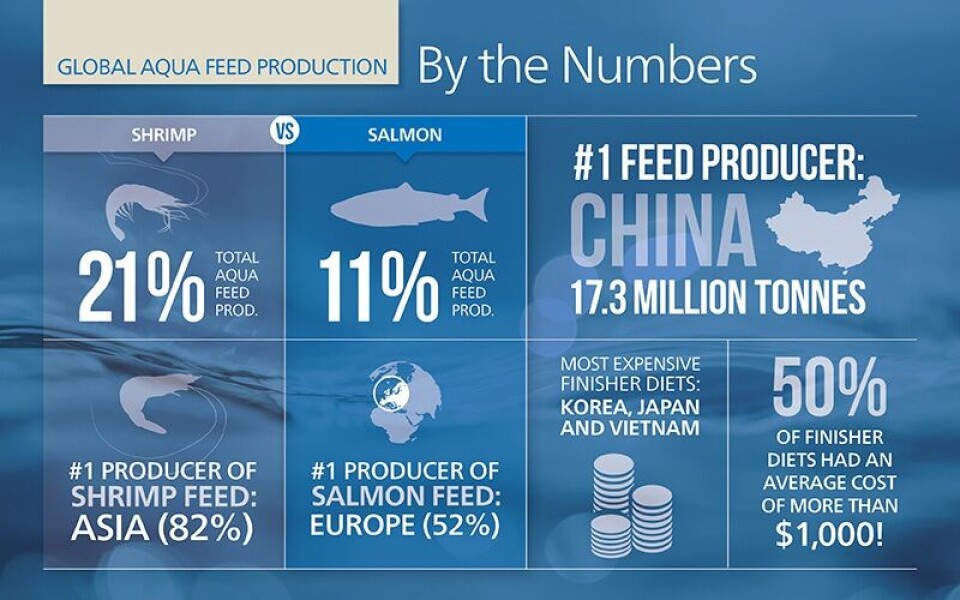
Salmon feed stats revealed
Salmon consume 11% of the world’s aquafeeds, according to a new study published by Alltech today.
Shrimp accounted for 21% of aquafeed production worldwide, of which 82% is consumed in Asia.
Other top species in terms of feed production include:
- Carp (of which 62% are from China).
- Catfish (of which 40% goes to the US, 36% to Vietnam and 35% to Bangladesh).
- Trout (of which 74% goes to Peru).
“Aquaculture is the fastest growing segment of the feed industry,” said Aidan Connolly, Alltech’s chief innovation officer and vice president of corporate accounts. “According to the Food and Agriculture Organization, fish consumption now exceeds beef consumption per capita, and farmed fish now exceed wild caught. The scale of the industry is leading many policymakers to question practices and methods, particularly in regard to sustainability.
“When we published our 2016 Global Feed Survey, we were presented with more questions regarding the aquaculture sector than any other species,” continued Connolly. “This was further indication that aqua generates a lot of interest. No one else has investigated the aquaculture industry in this way and we thought it was time to fulfil that need.”
In 2015, China led global aquaculture feed production with 17.3 million tonnes at an average cost per finisher diet of $850 USD. Vietnam and Norway followed with 2.8 and 1.789 million tonnes, respectively; however, the average finisher diets were much higher in cost, with Vietnam at $1,333 and Norway at $1,100.
The most expensive finisher diets originated from the Asia-Pacific region, with Korea at $1,800 and Japan at $1,700. Nearly 50 percent of survey responses indicated their region’s aqua finisher diets were more than $1,000 on average.
“Essentially, it comes down to imported raw materials,” explained Connolly. “What is produced locally is often in a protected marketplace regulated by government tariffs. The high feed prices in this region, in particular Japan, are reflected in other species as well, such as swine and poultry.”
Brazil, which finished eighth in the aqua feed survey, fed more than 25 different species of fish with its 0.940 million tonnes in 2015. Deep-bodied Amazonian breeds, Pirapitinga, Tambaqui and Pacu, constitute most of the Brazilian fish feed production.
“We found that in Brazil, a major portion of feed production was not allocated to the typical species produced by many other countries,” said Connolly. “It turns out that over 40 percent of Brazil’s feed production is allocated to a variety of local, Amazonian species, such as Pacu, Tambaqui, Tambacu and Tambatinga.”























































